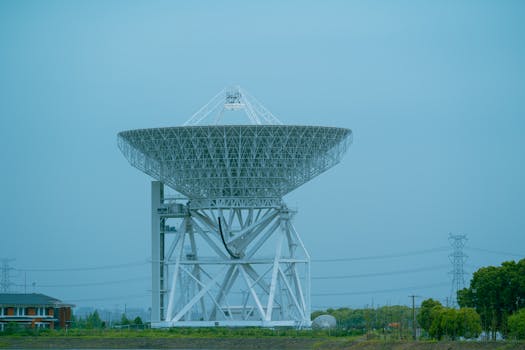The Future is Now: Exploring the Cutting-Edge Innovations in Satellite Telecommunications

The Future is Now: Exploring the Cutting-Edge Innovations in Satellite Telecommunications
Satellite telecommunications is an industry that has been rapidly evolving over the past few decades, and the future is now. With the integration of cutting-edge innovations, the possibilities for satellite telecommunications are endless. Satellite Telecommunications is the focus of this article, and we will delve into the latest advancements in this field.
Introduction to Satellite Telecommunications
Satellite telecommunications has been around for several decades, but it has only been in recent years that the industry has experienced significant growth. This growth can be attributed to the increasing demand for global connectivity and the need for reliable and efficient communication systems. Satellite telecommunications provides a solution to these needs by offering a wide range of services, including voice, data, and video transmission.
The industry has undergone significant transformations over the years, from the launch of the first commercial communications satellite, Intelsat 1, in 1965, to the current era of advanced satellite constellations. These constellations, such as OneWeb and Starlink, are designed to provide global coverage and high-speed connectivity, making them an essential part of modern telecommunications infrastructure.
Advances in Satellite Technology
One of the most significant advancements in satellite telecommunications is the development of advanced satellite constellations. These constellations are composed of numerous small satellites that work together to provide global coverage and high-speed connectivity. They offer several advantages over traditional geostationary satellites, including lower latency, higher throughput, and improved signal strength.
Another area of innovation in satellite telecommunications is signal processing. The development of advanced signal processing techniques, such as beamforming and beam-hopping, has enabled satellites to transmit and receive signals more efficiently. This has resulted in improved signal quality, increased data transmission rates, and reduced interference.
The use of artificial intelligence (AI) and machine learning (ML) is also becoming increasingly prevalent in satellite telecommunications. AI and ML algorithms can be used to optimize satellite operations, such as predicting and mitigating interference, and improving signal processing. They can also be used to analyze large amounts of data, providing valuable insights into satellite performance and enabling more informed decision-making.
Applications of Satellite Telecommunications
Satellite telecommunications has a wide range of applications, from providing connectivity to remote and underserved communities to supporting critical infrastructure, such as emergency response and disaster recovery. Satellite-based services can also be used to support the Internet of Things (IoT), enabling the connection of devices and sensors in remote and hard-to-reach areas.
The use of satellite telecommunications in the maritime and aviation industries is also becoming increasingly important. Satellite-based services can provide critical connectivity for ships and aircraft, enabling communication, navigation, and surveillance. They can also be used to support the tracking of assets and cargo, improving supply chain management and reducing the risk of loss or theft.
Conclusion
In conclusion, the future of satellite telecommunications is now, with cutting-edge innovations revolutionizing the industry. From advanced satellite constellations to improved signal processing, the possibilities are endless. As the demand for global connectivity continues to grow, satellite telecommunications will play an increasingly important role in providing reliable and efficient communication systems. Whether it’s providing connectivity to remote communities or supporting critical infrastructure, satellite telecommunications is an essential part of modern telecommunications infrastructure.





